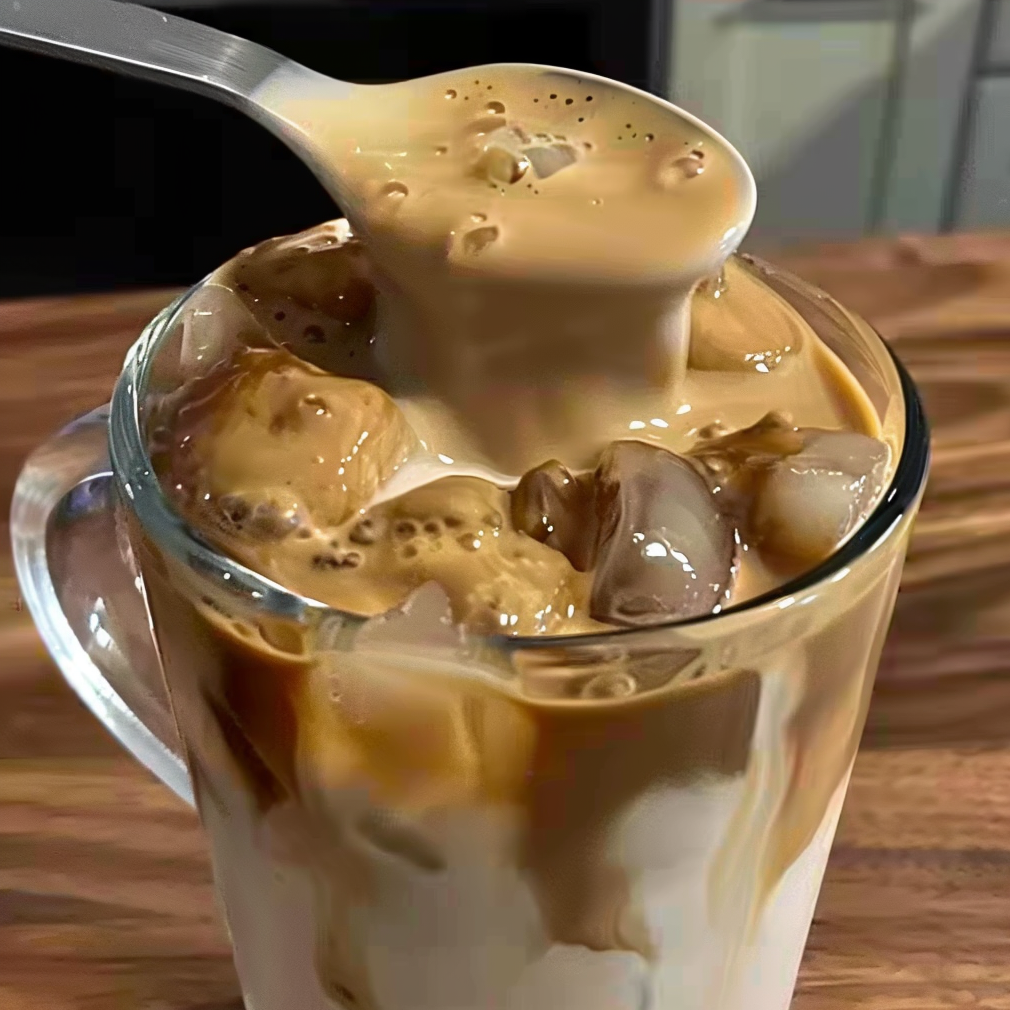Iced coffee has taken the world by storm, becoming one of the most beloved and refreshing beverages globally. Whether you enjoy it in the summer heat or as a year-round treat, this chilled caffeinated drink offers a perfect balance of bold coffee flavors with a smooth, refreshing finish.
But what makes iced coffee so special? Is it just hot coffee poured over ice, or is there more to it? This guide will explore everything you need to know about iced coffee—from its rich history and brewing techniques to the best recipes and variations from around the world.
History of Iced Coffee
The concept of iced coffee is not new; it dates back centuries. Some of the earliest records of cold coffee beverages come from Algeria in the 19th century with a drink called “Mazagran,” a sweetened coffee served cold.
By the 20th century, iced coffee became popular in Europe and America, with cafés and restaurants crafting their own versions. Today, thanks to social media and the rise of specialty coffee culture, iced coffee has evolved into an art form, with endless variations and creative twists.
Different Types of Iced Coffee
Classic Iced Coffee
Traditional iced coffee is simply brewed hot coffee that is cooled down and served over ice. It maintains a strong coffee taste with a slightly diluted texture.
Cold Brew Coffee
Cold brew is made by steeping coarsely ground coffee in cold water for 12-24 hours. This results in a smooth, less acidic, and naturally sweet coffee that’s perfect for serving over ice.
Iced Espresso Drinks
Espresso-based iced coffee drinks include:
-
Iced Americano – Espresso with water and ice
-
Iced Latte – Espresso with milk and ice
-
Iced Cappuccino – Frothy milk over espresso and ice
Nitro Cold Brew
A modern twist, nitro cold brew is cold brew infused with nitrogen gas, creating a creamy, slightly carbonated texture with a cascading effect similar to draft beer.
How to Make Iced Coffee at Home
Simple Iced Coffee Recipe
-
Brew a strong cup of coffee.
-
Allow it to cool for a few minutes.
-
Pour over a glass of ice.
-
Add milk, sugar, or flavorings if desired.
Cold Brew Method
-
Combine coarsely ground coffee with cold water.
-
Let it steep in the refrigerator for 12-24 hours.
-
Strain out the grounds and serve over ice.
Flash Brew (Japanese Iced Coffee) Method
-
Brew hot coffee directly onto ice.
-
This locks in flavors and creates a fresher taste compared to traditional cooling methods.
Best Coffee Beans for Iced Coffee
Arabica vs. Robusta
-
Arabica beans offer a smoother, sweeter taste, making them ideal for iced coffee.
-
Robusta beans have a stronger, more bitter flavor, suitable for those who like a bolder iced coffee.
Best Roast Levels
-
Light Roast – Bright and acidic, great for fruity iced coffees.
-
Medium Roast – Balanced and smooth, perfect for cold brews.
-
Dark Roast – Rich and bold, best for iced lattes and espresso drinks.
Top Coffee Brands for Iced Coffee
-
Starbucks Cold Brew Blend
-
Lavazza Gran Selezione
-
Blue Bottle Cold Brew
Sweeteners and Flavor Enhancements
Natural vs. Artificial Sweeteners
-
Natural: Honey, agave syrup, maple syrup
-
Artificial: Sucralose, aspartame, stevia
Flavored Syrups and Creams
-
Vanilla, caramel, hazelnut, mocha
-
Whipped cream and flavored foam
Dairy and Non-Dairy Options
-
Dairy: Whole milk, half & half, heavy cream
-
Non-dairy: Almond milk, oat milk, soy milk, coconut milk
Health Benefits of Iced Coffee
-
Antioxidants: Helps fight free radicals in the body.
-
Metabolism Boost: Caffeine increases calorie burning.
-
Hydration: A great alternative to sugary sodas.
-
Gut Health: Cold brew is less acidic, making it gentler on the stomach.
Iced Coffee vs. Cold Brew: What’s the Difference?
Many people confuse iced coffee with cold brew, but they are fundamentally different in how they are made, their taste profiles, and even their caffeine content.
Brewing Methods Compared
-
Iced Coffee: Brewed hot and then cooled down before being served over ice. It has a slightly acidic taste due to the rapid cooling process.
-
Cold Brew: Steeped in cold water for 12-24 hours, resulting in a smoother and less acidic coffee with a naturally sweet taste.
Taste and Caffeine Content Differences
-
Iced Coffee: Tends to be bolder, with a more pronounced coffee taste. The acidity can be higher, which some people enjoy for its sharp, tangy flavor.
-
Cold Brew: Naturally sweeter and much less acidic, making it easier to drink without sugar. Because it’s steeped for so long, it generally contains more caffeine than traditional iced coffee.
If you prefer a refreshing, bold coffee with a traditional taste, go for iced coffee. If you love a smoother, naturally sweeter, and more caffeinated drink, cold brew is your best bet.
Best Coffee Machines for Iced Coffee
Making iced coffee at home is easier with the right equipment. Here are some of the best machines to consider:
Drip Coffee Makers
-
Best for Classic Iced Coffee: A programmable drip coffee maker allows you to brew a strong cup of coffee and cool it before pouring it over ice.
-
Recommended Model: Ninja Hot and Cold Brewed System
Espresso Machines
-
Best for Iced Lattes and Americanos: If you love iced espresso drinks, an espresso machine will give you the best concentrated coffee shots.
-
Recommended Model: Breville Barista Express
Cold Brew Coffee Makers
-
Best for Cold Brew Enthusiasts: These machines allow for easy steeping and filtration, making cold brew effortless.
-
Recommended Model: Toddy Cold Brew System
Whether you prefer a traditional iced coffee or a cold brew, investing in a quality coffee machine can elevate your home coffee experience.
Popular Iced Coffee Variations Around the World
Different cultures have their own unique take on iced coffee. Let’s explore some of the most popular versions from around the globe.
Japanese Iced Coffee
-
Brewed hot and immediately poured over ice.
-
Locks in fresh flavors while keeping the body light and crisp.
Vietnamese Iced Coffee (Ca Phe Sua Da)
-
Made with strong Robusta coffee and sweetened condensed milk.
-
A rich, creamy, and highly caffeinated drink.
Greek Frappe
-
Instant coffee, sugar, and water shaken to create a frothy, foamy iced drink.
-
A staple in Greece, perfect for summer.
Thai Iced Coffee
-
Coffee mixed with condensed milk, sugar, and cardamom.
-
A sweet and aromatic beverage that pairs well with spicy food.
Trying these international iced coffee variations can be a fun way to experience global coffee culture from your own kitchen!
Iced Coffee Trends and Innovations
Iced coffee has evolved far beyond a simple chilled beverage. Here are some of the latest trends:
Ready-to-Drink Iced Coffee
-
Bottled and canned iced coffees from brands like Starbucks, La Colombe, and Dunkin’ have become increasingly popular.
-
Offers convenience without compromising on taste.
Sustainable Packaging and Brewing Methods
-
Coffee brands are moving toward recyclable and biodegradable packaging.
-
Many cafés are promoting reusable cups and eco-friendly coffee beans.
Iced Coffee Cocktails
-
Espresso Martini: A boozy take on iced coffee with vodka and coffee liqueur.
-
Cold Brew Old Fashioned: Blends cold brew with whiskey and bitters for a sophisticated twist.
With so many innovations, iced coffee is more exciting than ever!
Common Mistakes When Making Iced Coffee
Making iced coffee at home is easy, but there are common mistakes that can ruin the experience.
Using Hot Coffee Without Proper Chilling
-
Pouring hot coffee directly over ice can result in a weak, watery drink.
-
Instead, let the coffee cool or use the flash brew method.
Over-Dilution from Ice
-
Too much ice can dilute the coffee, making it bland.
-
Use coffee ice cubes to keep the flavor strong.
Choosing the Wrong Coffee Beans
-
Some beans are too acidic or weak for iced coffee.
-
Opt for medium or dark roast beans for a richer, smoother taste.
Avoiding these mistakes ensures that your iced coffee is always bold, flavorful, and refreshing.
Iced Coffee for Different Seasons
While iced coffee is a summer favorite, it can be enjoyed all year round.
Summer Iced Coffee Recipes
-
Coconut Iced Coffee: Brewed coffee with coconut milk and a touch of vanilla.
-
Berry Cold Brew: Cold brew with blueberry or raspberry syrup for a fruity twist.
Winter Iced Coffee Twists
-
Iced Cinnamon Mocha: Cold coffee with chocolate syrup, cinnamon, and milk.
-
Peppermint Iced Latte: A festive treat with espresso, milk, and peppermint syrup.
Switching up your iced coffee recipes by season keeps your caffeine routine exciting!
The Best Cafés for Iced Coffee Lovers
If you’re looking for the best iced coffee, some cafés are known for their exceptional brews.
Famous Coffee Shops
-
Starbucks: Their Cold Brew and Nitro Cold Brew are customer favorites.
-
Blue Bottle Coffee: Known for high-quality cold brew with a smooth finish.
Local Hidden Gems
-
Many independent cafés offer unique house-made iced coffee blends that are worth exploring.
-
Specialty coffee shops often have baristas who can craft custom iced coffee drinks.
Supporting local coffee spots can lead you to some of the best iced coffee experiences.
Conclusion
Iced coffee is more than just a chilled version of hot coffee—it’s an experience, a ritual, and a refreshing treat that has evolved into a global phenomenon. Whether you prefer a simple homemade iced coffee, a smooth cold brew, or an exotic international variation, there’s always something new to explore in the world of iced coffee.
With the right brewing method, quality beans, and a little creativity, you can craft the perfect iced coffee tailored to your taste. So grab a glass, fill it with ice, and enjoy your next refreshing sip!
FAQs
What is the best type of coffee for iced coffee?
Medium to dark roast Arabica beans are best, as they provide a rich, bold flavor that holds up well when chilled.
How can I make iced coffee without it getting too watery?
Use coffee ice cubes instead of regular ice, or brew a stronger coffee to compensate for the melting ice.
Is cold brew stronger than iced coffee?
Yes, cold brew generally has a higher caffeine content because it is steeped for a long period, extracting more caffeine from the beans.
Can I make iced coffee with instant coffee?
Yes! Dissolve instant coffee in cold water or milk, then add ice and sweeteners as desired.
What’s the difference between iced coffee and an iced latte?
Iced coffee is brewed coffee served over ice, while an iced latte is made with espresso and milk, making it creamier and smoother.
Print
Iced coffee
- Total Time: 24 hours 5 minutes
- Yield: 1 serving 1x
- Diet: Vegan
Description
Discover the ultimate guide to making iced coffee at home! Learn easy recipes, the best coffee beans, and expert tips to craft the perfect refreshing drink.
Ingredients
1 cup freshly brewed coffee (or cold brew)
1 cup ice cubes
1-2 tbsp sweetener of choice (sugar, honey, or syrup) (optional)
1/4 cup milk or cream (dairy or non-dairy) (optional)
1/2 tsp vanilla or caramel syrup (optional)
Instructions
Classic Iced Coffee Recipe
Brew a strong cup of coffee and let it cool to room temperature.
Fill a glass with ice cubes.
Pour the cooled coffee over the ice.
Add sweetener and stir well.
Add milk or cream if desired.
Enjoy immediately!
Cold Brew Method
Combine 1 cup coarsely ground coffee with 4 cups cold water in a jar.
Let it steep in the refrigerator for 12-24 hours.
Strain the coffee using a fine mesh sieve or coffee filter.
Serve over ice and add milk or sweetener if desired.
Notes
Use fresh coffee beans – A high-quality, medium or dark roast works best.
Make coffee ice cubes – Freeze brewed coffee in an ice tray to avoid dilution.
Try different sweeteners – Honey, agave, or maple syrup add a unique touch.
Experiment with flavors – Add cinnamon, vanilla, or even chocolate for a twist.
Use a cold brew maker – If you love cold brew, investing in a cold brew coffee maker is a great idea.
- Prep Time: 5 minutes
- Cook Time: 24 hours

